I’m here to help you glide into the world of kayaking terminology, one of the most thrilling watersports. Right from the get-go, you should know that this isn’t just about paddling through the waves;
it’s also about embracing an entirely new language. Kayaking terminology may seem like a lot to take in, but getting familiar with it can do wonders for your safety and enjoyment.
Essential Kayaking Terms
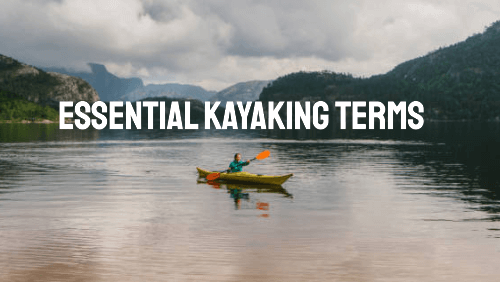
You’re going to find out about essential kayaking terms that will serve as your foundational vocabulary on the water. I’ll guide you through basic terms and names of movements that are integral to kayaking.
This knowledge isn’t just for show; it’s a critical part of your kayaking education that will help you understand instructions, improve your skills, and communicate effectively with other kayakers.
Building Your Kayaking Lexicon

Don’t worry too much about memorizing every term at once. You can always refine your kayaking lexicon as you gain experience. Choose terms that resonate with you; start with the basics, and slowly build your repertoire.
This groundwork is crucial for understanding the nuances of different kayak styles and designs in the next section, which will further expand your kayaking proficiency.
Essential Kayak Styles and Designs Explained
Starting with the basics, did you know there are several types of kayaks each suited to different water environments and activities? Let’s get you familiar with the core terms.
Sit-on-Top vs. Sit-Inside Kayaks

The first fork in the river comes down to ‘sit-on-top’ vs ‘sit-inside’ kayaks. Sit-on-top kayaks are great for beginners; they offer stability, are easy to get in and out of, and are self-draining.
On the flip side, sit-inside kayaks provide better protection from the elements and are often preferred for colder climates or more extended paddling trips.
Kayak Length and Performance
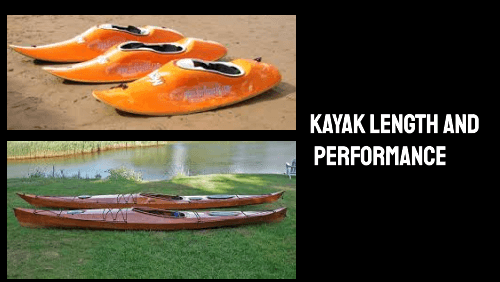
The length of your kayak directly affects its performance. Shorter kayaks are typically more maneuverable, making them ideal for river or whitewater kayaking, while longer kayaks track straighter and are better for long-distance paddling in open waters, like sea kayaking.
Understanding Rocker
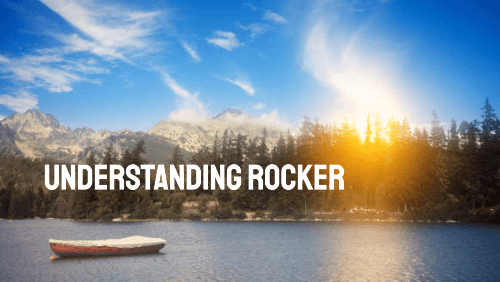
Design terms such as ‘rocker’ might sound like music jargon, but in the kayaking world, rocker refers to the curvature of the kayak’s hull from front to back.
- A high rocker means more curve and better maneuverability, while a
- Low rocker indicates a flatter hull that’s more stable on calm waters.
Hull Shapes and Their Impact

Other key design terms to remember include ‘hull’, the shape of the bottom of your kayak, which can be either flat, rounded, or v-shaped, each affecting stability and speed.
‘Chine’ refers to how sharply the kayak’s sides meet the hull and can be soft or hard, influencing how the kayak handles in water.
Lastly, the ‘keel’ is the spine running along the bottom of the kayak that helps with straight-line tracking but can get in the way when you’re navigating tight spaces.
The Role of the Keel
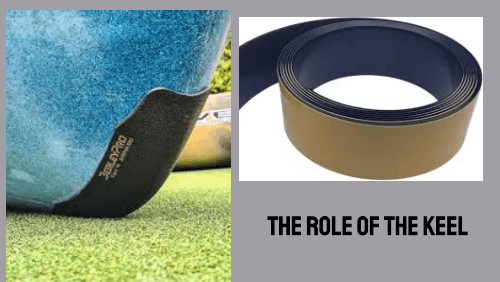
Now that you’ve got a grip on kayak styles and their designs, let’s move onto paddling itself. You can choose the best kayak in the world, but without the know-how to glide it through the water, it’s like having a sports car without knowing how to drive. So, stick around as I’m going to cover the core paddling techniques next.
Navigating the Waters: Key Paddling Terms
I’m going to break down some key paddling terms that are vital to not just moving your kayak through the water, but doing it with precision and control. Think of paddling as your conversation with the water; every stroke you take is a word in your dialogue with the currents and waves.
Sweep, Draw, and Brace Strokes
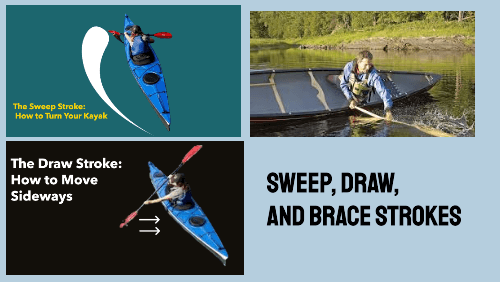
You’re going to find out about different paddle strokes, particularly the following:
- Sweep
- Draw, and
- Brace
The Sweep stroke turns your kayak, the Draw stroke moves it sideways, and the Brace stroke keeps you stable and prevents capsizing.
Bow Rudder and Stern Rudder
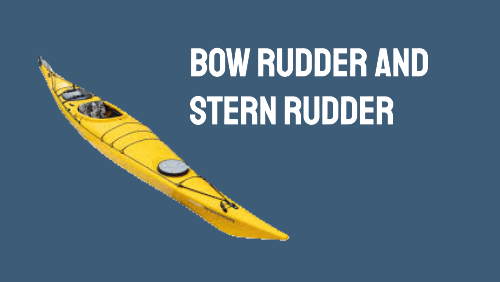
Directional control isn’t just about what you do with your paddle. Terms like Bow rudder and Stern rudder refer to techniques that help you steer the kayak using the tip and tail ends, respectively.
The Eskimo Roll

And here’s a name that sounds like a cool secret move, which, in a way, it is: the Eskimo roll. It’s essentially a recovery maneuver that allows a paddler to right themselves if they’ve flipped over without exiting the kayak.
Now, paddling isn’t just about keeping the kayak afloat and headed where you want to go. It also plays a crucial role in your safety, which I’m going to touch on in the next section, where we’ll discuss safety and gear terminology.
Staying Safe on the Water: Safety and Gear Terminology
At this point, you’re getting more comfortable with the basic lingo of kayaking, and I’ve got to say, it’s impressive. But before you hit the waves, there’s another critical aspect you need to grasp: safety and gear terminology. Let’s make sure you’re geared up and ready for a safe time on the water.
Personal Floatation Devices (PFDs)
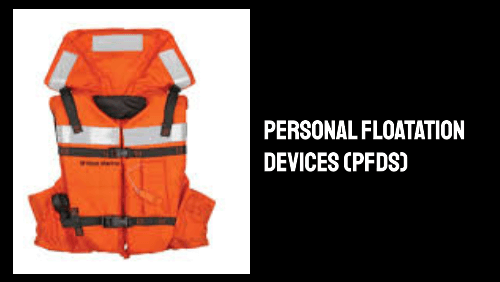
First up, Personal Floatation Devices, or PFDs. These aren’t just life jackets; they’re your best friends when you’re out on the water.
PFDs are designed to keep you afloat should you take an unexpected swim, so make sure you’re wearing one that fits properly. It’s not just a recommendation – in many places, it’s the law.
Spray Skirt
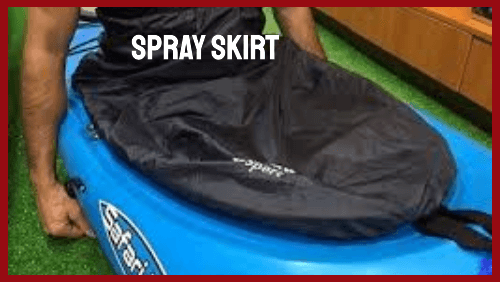
Next, let’s talk about the spray skirt, often just called ‘the skirt’. This nifty piece of equipment seals the cockpit to prevent water from getting inside your kayak. It’s a must-have for sit-inside kayaks, especially if you’re venturing into rougher waters.
Bilge Pumps and Float Bags
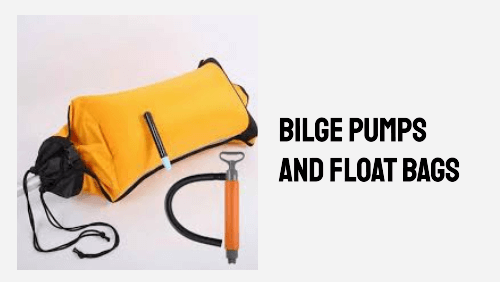
You might also want to familiarize yourself with bilge pumps and float bags. A bilge pump is a quick way to remove water from your kayak, while float bags, placed in the hull, will keep your kayak buoyant if it capsizes.
The Buddy System

Last but definitely not least, never underestimate the power of the buddy system. Always kayak with a friend, and make sure you both know the basic hand signals and communication methods. It’s not just for companionship; it’s a core part of your safety on the water.
Remember, kayaking is meant to be fun, but it’s also a serious activity that demands respect for the elements. So, choose gear that resonates with you and gives you confidence, and always prioritize safety.
Now that you know the basics of kayaking terms, you’re ready to get paddling. I really hope that you find as much joy in this fantastic sport as I have. Stay safe, and enjoy your adventure!
